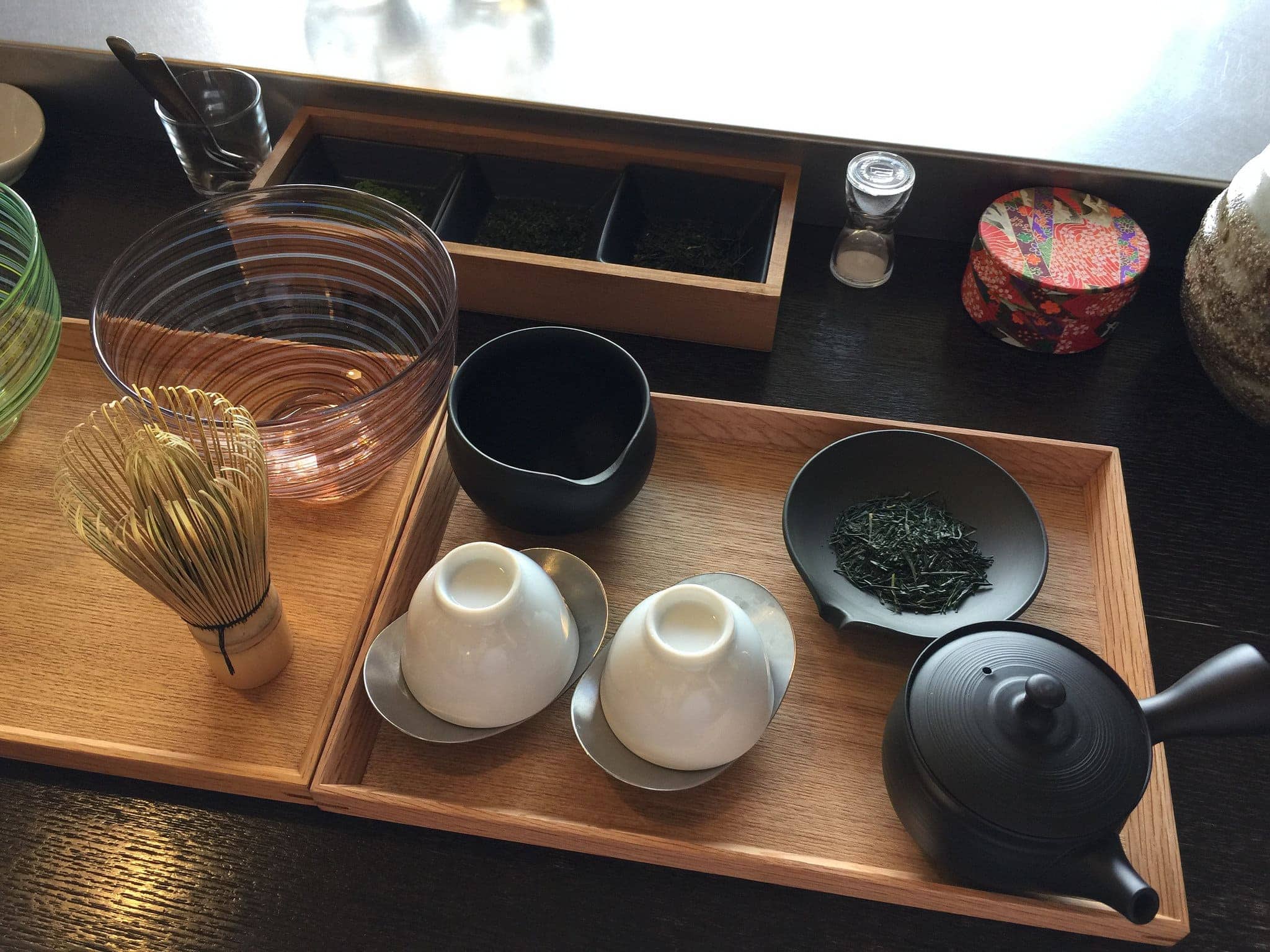
Hojicha, Sencha, Mugicha, Sobacha, and Matcha More.
Historically, green tea was the first tea cultivated in China. Today, almost all tea grown in Japan is green tea. There are, of course, differences in growing methods, harvesting time, and processing methods. Here is a guide comparing Japanese teas to learn which is which and which will be your new favorite.
Guide to Comparing Japanese Teas
Shincha
Shincha is the first pick of the season. The leaves are notably refreshing with that new leaf scent with a full-bodied flavor and natural sweetness. Because it is the first pick and fresh, the caffeine content is low and the taste is less bitter.
Sencha
Sencha is the most known and most consumed loose leaf green tea. The leaves are steamed and rolled right after harvesting.
Fukamushi Sencha
Fukamushi Sencha are sencha leaves that is steamed two or three times longer than sencha.
Gyokuro
Gyokuro is made from tea leaves that are shaded from sunlight for about 20 days before being harvested. This results in a less bitter and richer flavor with an aroma similar to nori seaweed. Gyokuro is considered the highest quality tea.
Tencha
Tencha is essentially gyokuro leaves that are not rolled during production.
Kabusecha
Kabusecha leaves are shaded from sunlight for 5 to 10 days before harvesting. While not as premium as gyokuro, the shading creates a darker green color, full-bodied, and less bitter taste.
Bancha
Bancha is the second harvest in which leaves are stems are firmer which makes for coarser tea leaves. The result is less expensive and lower quality tea.
Hojicha
Hojicha is made from sencha, bancha, or kukicha leaves, stems, stalks, or twigs that are slowly roasted and tightly rolled or ground into a super fine powder. The result is a soothing, earthy, smoky aroma with a reddish-brown color. The tea is naturally sweet and smoky with cocoa notes and no bitterness from the roasting process.
Because of the heat of roasting, there is a low caffeine content (7.7mg per cup) and therefore it is a popular after dinner tea to aid digestion.
Genmaicha
Genmaicha is a blended tea using 50% bancha or sencha and 50% brown rice. The tea and rice are soaked and steamed, then the brown rice is roasted and popped. The result is a distinctive fragrant aroma with low caffeine content.
Kukicha
Kukicha is stem tea from the remains sifted out of gyokuro and sencha leaves. It is lightly sweet and very mild. This tea is often served with traditional Japanese snacks.
Konacha
Konacha is finely powdered tea that is used to make teabags. It is softened served in sushi restaurants.
Matcha
Matcha is most known for its bright green color. Dried tencha leaves are stone-grinder into a fine powder with a fresh vegetal aroma. Because the leaves are simply dried and not processed, matcha is a higher caffeine content (70mg per cup). Premium matcha has a slightly sweet and savory umami flavor with low bitterness.
Mugicha
Mugicha is not made from tea leaves but rather it is roasted barley grain which means there is no caffeine at all. The taste is smooth with no bitterness. It can be served hot or cold, but in the summer months it is most popular as a chilled drink.
Sobacha
Sobacha is roasted buckwheat kernels with an earthy, wheat flavor – the same buckwheat used to make soba noodles. Like mugicha, it is served hot or cold and it is caffeine free.
Buy your Official JR Pass and Regional Pass!
Stay connected in Japan with Pocket Wifi!
Arrive in style and convenience with Meet & Greet service!

Disclaimer: This article contains affiliate links. With no additional cost to you, your purchases earn me a commission if you click on the links via my website – Thank you!
Sign up for my newsletter on the sidebar for blog updates and my travel insider tips! And, check out my vlogs on YouTube!


